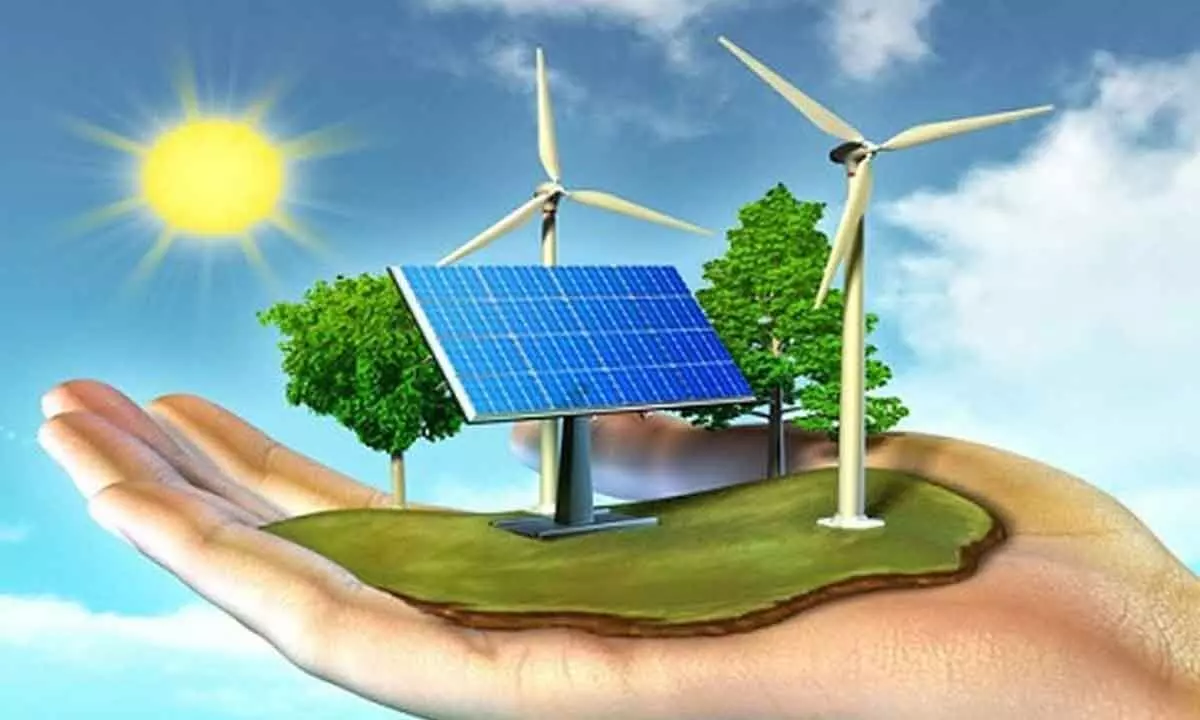RE capacity addition hits slow lane in FY24
India added 6,972.62 MW in 7 mths of current fiscal as against 15,274.43MW in FY23
image for illustrative purpose

Renewable Energy
- Capacity addition was 45.6% this fiscal so far
- Total installed power capacity is 425.4 GW
- Renewable energy accounts for 178.6 GW
- India targets 500GW of non-fossil fuel-based energy by 2030
- Govt announced $2.4-bn National Hydrogen Mission
- Targets 5 MMT hydrogen production by 2030
New Delhi: For the first time in the last four years, renewable energy (RE) capacity addition may decline in 2023-24 financial year. In the first seven months of the current fiscal, it was 6,972.62 MW (6.97 GW). During 2022-23, RE capacity addition was 15,274.43 MW. Even though more than half of the year is over, the capacity addition has been around 45.6 per cent. During 2020-21, RE increased by 7,548.11 MW and in 2021-22 by 14,081.97 MW.
Solar power increased by 5,237.7 MW during April-October this fiscal, official sources told Bizz Buzz. This was followed by wind power (1,659.25 MW), small hydro power (42.45 MW), waste to energy (off-grid, 17.82 MW), biomass (non-bagasse) cogeneration (13.8 MW), and waste to power (1.6 MW).
Of solar power, ground mounted solar plants contributed 55.71GW, grid connected solar rooftops 11.08GW, hybrid projects (solar component) 2.55 GW, and off-grid solar 2.68 GW.
Of the total installed power capacity of 425.4 GW, renewable energy accounts for 178.6 GW. In terms of installed RE capacity, India stands 4th globally (including large hydro).The country set a target of 500GW of non-fossil fuel-based energy at the COP26 by 2030. This, the government claims, is the world’s largest expansion plan in renewable energy. India’s installed non-fossil fuel capacity has gone up 396 per cent in the last 8.5 years, according to an official website.
Budget-2023 introduced several measures to boost RE. It announced the $2.4-billion National Hydrogen Mission for the production of 5 MMT by 2030. Then there were 4 GWh battery energy storage systems, supported through viability gap funding and pumped storage projects.
Another important stimulus was the production-linked incentive (PLI) scheme in high efficiency solar PV modules. Tranche-I amounted to Rs4,500 cr $550 mn) and Tranche-II, Rs19,500 crore ($2.37 bn). As per government estimates, this would create 30,000 direct jobs and 120,000 indirect jobs.

